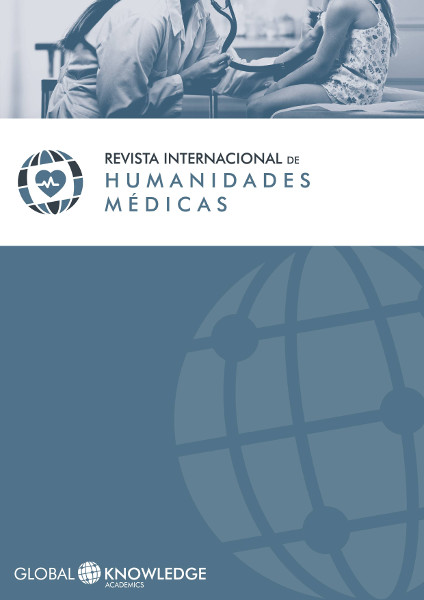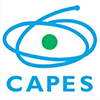An Interdisciplinary View of Dyslexia through the Cinema
DOI:
https://doi.org/10.37467/gka-revmedica.v4.845Keywords:
Dyslexia, Neurodevelopment, School Failure, Self-EsteemAbstract
Dyslexia is a controversial issue today. There are many different approaches to study this learning disability (medical, educational, psychological and social). The media have tried to show some points of view about dyslexia’s aetiology, diagnosis and intervention models. In this paper we will try to describe quotidian situations related to this learning difficulty through the film “Taare Zameen Par”.
Global Statistics ℹ️
|
53
Views
|
54
Downloads
|
|
107
Total
|
|
References
Beaton, A. (2004) Dyslexia, reading and the brain: a sourcebook of psychological and biological research. Hove: Psychology Press
Berlin, R. (1884). Über Dyslexie. Archiv für Psychiatrie, 15, 276-278.
Berlin, R. (1887). Eine besondere Art der Wortblindheit. Wiesbaden, Germany: J. F. Bergman.
Carrillo, M. S., Alegría, J., Miranda, P. y Sánchez, N. (2011). Evaluación de la dislexia en la escuela primaria: Prevalencia en español. Escritos de Psicología, 4 (2), 35-44.
Chakravarty, Ambar (2009). Taare Zameen Par and dyslexic savants. Annals of Indian Academy of Neurology, 12 (2), 99–103.
Díaz García, M. T. (2009). “Creencias y opiniones sobre la dislexia”. En P. Outón Oviedo (coord.): Dislexia. Una visión interdisciplinar (pp. 161-171). Barcelona: Lebón.
Grigorenko E., Wood F., Meyer M, Pauls J., Hart L., y Pauls D. (2001). Linkage studies suggest a possible locus for developmental dyslexia near the Rh region on chromosome 1p. American Journal of Medical Genetics, 105, 120-129.
Igartua, J. J. (2008). Identificación con los personajes y persuasión incidental a través de la ficción cinematográfica. Escritos de Psicología, 2 (1), 42-53.
Mendizábal de la Cruz, N. (2011). Lingü.stica, semiótica y cine: perspectivas de estudio e investigación. Espéculo. Revista de Estudios Literarios, 47 . Universidad Complutense de Madrid.
Morgan, W. P. (1896). A case of congenital word-blindness. British Medical Journal, 7, 1378.
Morris, D. W. et al. (2000). Family-based association mapping provides evidence for a gene for reading disability on chromosome 15q. Human Molecular Genetics, 9 (5), 843-848.
Mulas, F., Etchepareborda, M. C., Díaz-Lucero, A. y Ruíz-Andrés, R. (2006). El lenguaje y los trastornos del neurodesarrollo. Revisión de las características clínicas. Revista de Neurología, 42(Supl. 2): S103-109.
Outón Oviedo, P. (2002). Naturaleza de la dislexia. Innovación Educativa, 12, 351-361.
Outón Oviedo, P. (2008). Programas de intervención con disléxicos: diseño, implementación y evaluación. Madrid: Paradox.
Pinel, V. (2009). Los géneros cinematográficos: géneros, escuelas, movimientos y corrientes en el cine . Barcelona: Robinbook.
Portellano Pérez, J. A. (2008). Actualidades en neurobiología de la dislexia. Polibea, 89, 1-3.
Reid, G. (2005). Dyslexia and inclusion: classroom approaches for assessment, teaching and learning. London: David Fulton.
Sathyanarayana Rao, T. S. y Krishna, V. S. T. (2008). Wake up call from ‘Stars on the Ground’. Indian Journal of Psychiatry, 50 (1), 2–4.
Wood, C., Sheehy, K., Passenger, T., y Littleton, K. (2006). Understanding specific learning difficulties. En C. Wood, K. Sheehy, T. Passenger y K. Littleton, Developmental psychology in action (pp. 10-51). Malden: Blackwell Publishing.
Downloads
Published
How to Cite
Issue
Section
License
Those authors who publish in this journal accept the following terms:
- Authors will keep the moral right of the work and they will transfer the commercial rights.
- After 1 year from publication, the work shall thereafter be open access online on our website, but will retain copyright.
- In the event that the authors wish to assign an Creative Commons (CC) license, they may request it by writing to administracion@edulab.es









